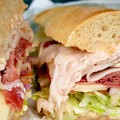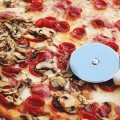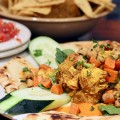The Chinese word “bao” is actually an abbreviation of “baozi”—which, when translated to English, means “gift” or “treasure.” It’s an apt moniker. The white bready exterior of these portable, steamed parcels betrays little of their insides, which may host any number of savory treasures, from pork, ground chicken and hard-boiled eggs to sweeter fillings, such as chocolate with hazelnuts.
Adventurous diners will be familiar with the many forms baos have taken throughout Asian cuisine, as this Chinese dish has inspired the Vietnamese bánh bao; the Filipino siopao; and the Japanese nikuman. The most popular iteration of bao is likely the Chinese soup dumpling, xiaolongbao.
But XLBs have a new competitor: bao buns. This Chinese favorite has been gaining traction in the US recently.
In Taiwan, the self-contained and compact bao buns are a popular street food. Here in America, they are typically served as appetizers and, for the most part, are filled with some kind of glazed pork belly.
Of late, a number of local food trucks have helped introduce bao buns to South Bay eaters. But one restaurant, Bao Chinese Eats (BCE), is looking to take the trend fully mainstream with a storefront at the old Garden Theater in downtown Willow Glen.
BCE’s menu is one of the most modest I’ve seen in some time. The restaurant offers four different bao selections and another three Chinese fusion items. There are a few vegan- and vegetarian-friendly items, but on the day I visited they were out of those.
Customers may purchase individual baos ($6 each) or a combo box ($13), which includes two baos of one’s choosing, shrimp dumplings and a slaw. We wanted to try it all, so we got the bao box with a tiger’s belly (pork belly), beef bao and an additional kung-pao chicken bao. On the fusion side of the menu, we opted for the Chinese pork burger ($7) and the pizza-like fresh bird ($8.50).
First up, the fusion items. We were especially excited for the pork burger, which featured a crispy housemade bao bun, stuffed to the gills with chopped pork belly, cilantro and not much else. The flavor was unfortunately quite bland. The meat was not adequately sauced and the bun itself made the entire dish dry and boring.
Next was the fresh bird, which really should be called the “odd bird.” Combining deli turkey, sweet mustard, arugula and mozzarella on top of a Chinese green onion pancake, it doesn’t sound like it should work on paper. However, it was fantastic. The green onion pancake was crispy, not too oily and made for a sturdy base; the well-balanced combo of salty turkey, sweet mustard and peppery arugula made my taste buds dance.
Then came the three baos. The tiger’s belly caught my eye immediately, as the giant slab of pork belly stuck out a good half-inch over both edges of the bao. The tender glazed meat melted in my mouth. Combined with the pillow-soft bao bun and house honey kimchi, it made for one of the more interesting bites I’d taken in a long time. The richness of the pork belly began to overwhelm me about halfway through, though. Be warned.
From the pork, I moved to the kung-pao chicken, which was almost neon red in appearance. Topped with house-pickled onions and peanuts, this bao made for one of the tastier items we sampled. The sweet and sour tang of the sauce was delicious, but the bao could’ve used something fresh to break-up all the strong onion, vinegar and sweet flavors bouncing around my mouth.
I tried the beef bao last. Though it was the least impressive-looking of the bunch, it turned out to have the biggest flavor of the three. Prepared in a Korean bulgogi-style with sweet soy sauce, the beef was almost as tender as the aforementioned pork belly. It was also topped with the house honey kimchi and fresh cucumbers, which provided the freshness I was looking for in the chicken bao. It was the tastiest bite of the afternoon, but could’ve used a little heat.
Bao Chinese Eats
1163 Lincoln Ave San Jose
669.342.4619
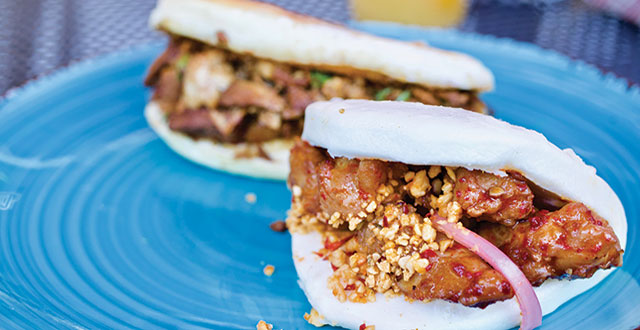
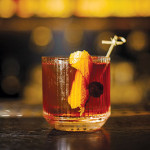 Served With Seltzer or Clear-Cut Ice, the Old Fashioned is a True Original
Served With Seltzer or Clear-Cut Ice, the Old Fashioned is a True Original  The Silicon Valley Roots of J. Lohr Vineyards & Winery
The Silicon Valley Roots of J. Lohr Vineyards & Winery 
